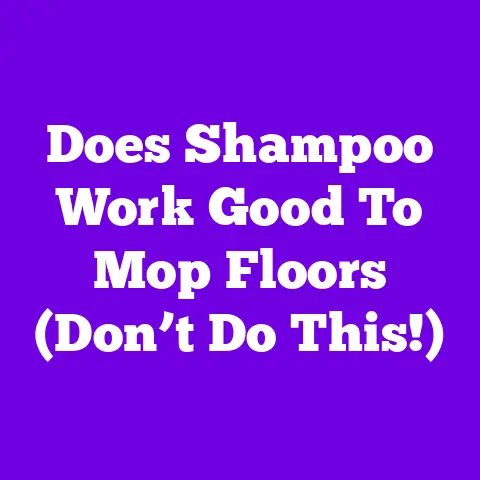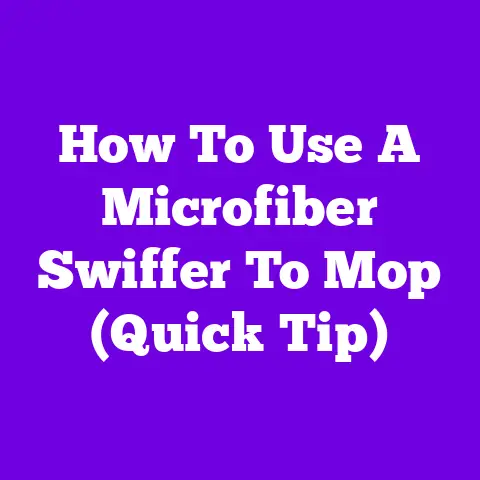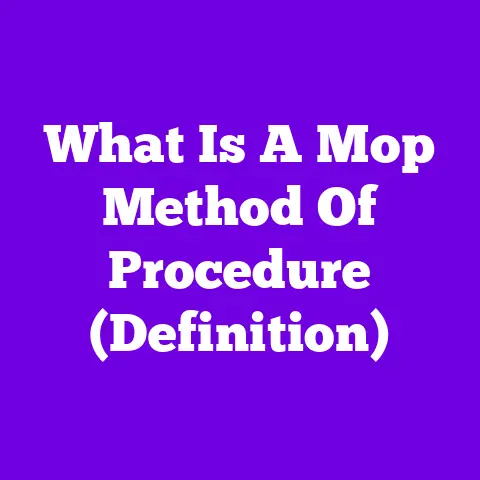How To Store Wet Mop (+Prevent Gems & Bacteria)
To store a wet mop properly, clean the mop head after each use, wring it thoroughly, and allow it to completely dry before storing. Store the mop with the head up and in a well-ventilated area to prevent bacteria and mildew growth.
Like a carefully preserved gem, a wet mop must be stored with utmost care to prevent the growth of bacteria and maintain its effectiveness.
In this article, we will explore the proper techniques for storing a wet mop to ensure its longevity and hygienic qualities.
By following these guidelines, you can keep your mop in pristine condition, ready to tackle any cleaning task while minimizing the risk of bacterial contamination.
Key Takeaways
- Thoroughly clean and rinse the mop head to remove dirt, debris, and residual detergent.
- Ensure the mop is completely dry before storing to prevent mold and mildew growth.
- Wash the mop head in a washing machine with hot water and detergent to eliminate bacteria.
- Store the mop in a well-ventilated and dry location, away from direct sunlight, and use suitable storage options such as hooks or wall-mounted holders.
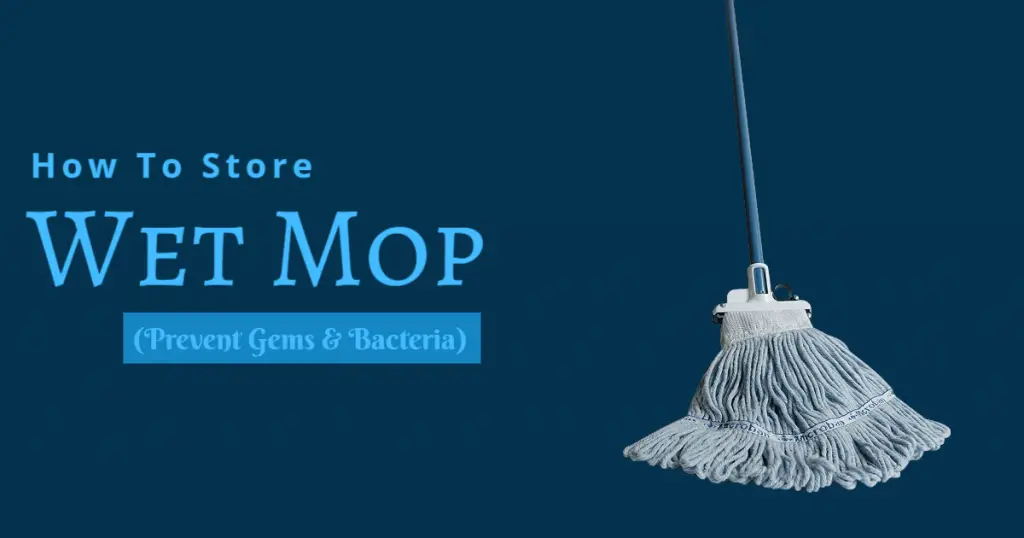
What to Do After Using a Wet Mop
After using a wet mop, there are a few important steps you should take to ensure that your floors are clean and well-maintained.
Here are some suggestions on what to do next:
Clean and Rinse the Mop
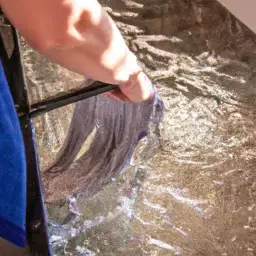
This discussion focuses on the proper cleaning and rinsing techniques for a mop before storing it.
To prepare the mop for storage, it is important to thoroughly clean the mop head by removing any excess dirt or debris.
Additionally, rinsing off any residual detergent is essential to prevent the buildup of bacteria and germs.
Finally, allowing the mop to dry completely before storing it helps prevent mold and mildew growth, ensuring its longevity and effectiveness in future use.
Preparing the mop for storage
To prepare the mop for storage, it is important to ensure that it is thoroughly cleaned and dried to prevent the growth of germs and bacteria.
After cleaning and rinsing the mop, it is recommended to wash it in a washing machine using hot water and detergent.
This helps remove any residual dirt or contaminants from the mop head.
Additionally, soaking the wet mop head in soapy water can further eliminate bacteria.
Once cleaned, it is crucial to dry the mop completely before storing it.
This includes drying both the mop head and handles thoroughly to avoid moisture retention, as dampness creates an environment where germs can flourish.
By properly cleaning and drying the mop before storage, one can minimize the risk of contamination or cross-contamination when using it again on clean floors.
Thoroughly cleaning the mop head
Thoroughly cleaning the mop head involves several steps to ensure its effectiveness in maintaining clean floors.
First, it is important to remove any excess water from the mop head by squeezing or wringing it out.
Next, submerge the mop head in warm water mixed with a suitable cleaning solution. This will help to loosen and dislodge any trapped debris.
Gently agitate the mop head in the solution, making sure to cover all areas of the mop head.
After agitating, rinse the mop head thoroughly with fresh water. It is recommended to use clean water, preferably cold, for rinsing purposes.
Once rinsed, wring out any excess water from the mop head.
Finally, allow the mop head to air dry completely before storing it away with other cleaning tools and supplies.
By following these steps, you can ensure that your mop head is free from any dirt, contaminants, or residue that may compromise its effectiveness in maintaining clean floors.
Rinsing off any excess dirt and detergent
Rinsing off any excess dirt and detergent is an essential step in ensuring the cleanliness and effectiveness of the mop head.
This process removes any remaining residue that may hinder the mop’s ability to pick up dirt and grime effectively during future use.
It is important to conduct this task in a well-ventilated area to prevent the buildup of fumes from cleaning solutions.
To demonstrate the significance of rinsing, consider the following table:
| Situation | Result |
|---|---|
| Not rinsing off excess dirt and detergent | Mop head remains dirty and less effective |
| Rinsing with clean water | Mop head becomes clean and ready for use |
By rinsing off any excess dirt and excess detergent, we can ensure that our mop heads remain clean, prolonging their lifespan while preventing the accumulation of bacteria or germs.
This practice also eliminates foul odors caused by stagnant water in closed spaces such as cabinets.
Properly drying the mop before storage
Properly drying the mop before storage ensures that excess moisture is removed, preventing the growth of microorganisms and maintaining the mop’s cleanliness.
After rinsing off any excess dirt and detergent, it is crucial to allow the mop to dry completely.
One effective method is to hang the wet mop in an area with natural air circulation.
This allows air to flow around the mop, aiding in the evaporation of moisture.
Alternatively, placing the wet mop on a clean surface or using a drying rack can also be suitable options.
If the mop is machine washable, it may be beneficial to run it through a gentle cycle with plain water before drying.
This helps remove any remaining residue and ensures a more thorough cleaning process.
Additionally, if using a bucket with floor cleaning solutions, thoroughly rinse out any residues from the bucket and allow it to dry completely as well.
When storing the dried mop, ample storage space should be provided to avoid compressing or folding it tightly.
This can lead to moisture retention and potential mold growth.
A clean container or bag specifically designed for mops can help protect them from dust and contamination.
In conclusion, properly drying the mop before storage plays a vital role in maintaining its cleanliness and preventing bacterial growth.
By allowing natural air circulation or employing other appropriate methods for drying damp mops, one can ensure effective contamination control while prolonging their usability.
Disinfect the Mop
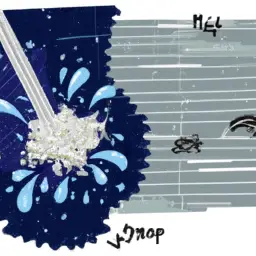
Disinfecting the mop after each use is of utmost importance to maintain cleanliness and prevent the spread of germs and bacteria.
Using suitable cleaning agents specifically designed for disinfection can effectively eliminate any remaining pathogens on the mop.
It is essential to allow sufficient time for the mop to be fully disinfected, ensuring that it is ready for future use in hygienic conditions.
Importance of disinfecting after each use
Regular disinfecting of a wet mop is crucial in order to effectively eliminate germs and bacteria.
It is important to emphasize the significance of this practice, as failure to properly disinfect a mop can lead to the spread of harmful microorganisms.
To ensure a thorough disinfection process, cleaning staff should follow these guidelines:
- Use an appropriate cleaning fluid or solution specifically designed for mops.
- Clean the mop after each use to prevent the accumulation of dirt and contaminants.
- Pay attention to all parts of the mop, including the handle and head.
- Store the mop in a clean and dry area to prevent bacterial growth.
- Regularly inspect and replace worn-out mops or cleaning rags.
Implementing these practices not only ensures hygienic conditions but also promotes safety within various settings such as households, commercial spaces, or healthcare facilities.
Moreover, it contributes to maintaining high standards in the cleaning market by preventing cross-contamination and promoting overall cleanliness.
Using suitable cleaning agents for disinfection
Using appropriate cleaning agents is essential for effective disinfection.
A mop that is not properly disinfected can become a breeding ground for harmful microorganisms, which can lead to health issues and contamination in the environment.
Cleaning services teams should ensure that they have access to suitable cleaning agents that meet the specific cleaning equipment requirements.
Consulting with a cleaning expert or engaging professional cleaning consultant services can help identify the most effective products for disinfection purposes.
Additionally, considering bathroom cleaning and other high-traffic areas where pathogens are likely to be present is important when choosing appropriate cleaning agents.
Proper selection and use of suitable cleaning agents play a vital role in maintaining cleanliness and preventing the spread of infections in various settings.
Allow time for the mop to be fully disinfected
To ensure proper disinfection, it is important to allow sufficient time for the mop to undergo a complete sterilization process.
This step is crucial in preventing germs and bacteria from proliferating on wet mop heads.
Here are some important considerations:
- Endwet mop heads: These disposable mop heads are designed to be tossed after each use, eliminating the risk of cross-contamination.
- Mopping robots: These automated devices can effectively clean and sanitize floors without human intervention, reducing the chances of bacterial growth.
- Commercial cleaning equipment: Investing in high-quality equipment such as steam cleaners or UV sanitizing systems can help achieve thorough disinfection.
- Color-coded cleaning system: Implementing a color-coded system for different areas or surfaces ensures that mops used in restrooms, for example, are not used in food preparation areas.
By following these guidelines, the risk of spreading harmful bacteria can be significantly reduced.
Additionally, using basic molded-in gallon measurements and precise amounts of water mixed with recommended capfuls per gallon can further enhance the effectiveness of the disinfection process.
Choose the Right Storage Area

This discussion will focus on the importance of selecting an appropriate storage space for your wet mop.
It is crucial to avoid areas with high humidity or temperature as these conditions can encourage the growth of germs and bacteria on the mop.
Additionally, it is recommended to keep the mop away from direct sunlight, as exposure to UV rays can weaken and deteriorate its fibers over time.
Selecting an appropriate storage space
An appropriate storage space for a wet mop should be selected to prevent the growth of germs and bacteria.
When considering the storage area for a wet mop, it is important to take into account several factors.
Firstly, it is recommended to choose a location that is well-ventilated and dry, as moisture can facilitate bacterial growth.
Secondly, the storage space should be away from food preparation areas or places where cross-contamination could occur.
Additionally, it is advisable to keep the mop off the floor by using hooks or racks specifically designed for mop storage. This helps in preventing contact with dirt or other contaminants.
Furthermore, investing in a quality mop such as Casabella Spin Cycle Mop and Bucket or microfiber strips can enhance cleaning efficiency and minimize germ spread.
By following these guidelines when selecting an appropriate storage space for a wet mop, one can effectively reduce the risk of bacterial growth and maintain hygienic conditions in their cleaning routine.
Avoiding areas with high humidity or temperature
High humidity or elevated temperatures should be avoided when selecting a storage space for a wet mop to inhibit the growth of microorganisms.
These conditions provide an ideal environment for germs and bacteria to thrive, potentially compromising the effectiveness of the mop and posing health risks.
When storing a wet mop, it is important to consider areas with low humidity levels and moderate temperatures.
Ideally, the storage space should have proper ventilation to ensure adequate air circulation, preventing moisture buildup that could lead to mold and mildew.
Additionally, selecting a storage area away from direct sunlight can help maintain the integrity of the mop’s materials, such as its string fibers or any basic molded-in gallon measurements.
By following these guidelines, cleaning with a wet mop becomes simpler while minimizing potential contamination risks.
Keeping the mop away from direct sunlight
To further prevent the growth of germs and bacteria on a wet mop, it is crucial to keep it away from direct sunlight.
Sunlight exposure can lead to the proliferation of harmful microorganisms due to its ability to create warm and humid conditions.
By storing the mop in a shaded area, such as a closet or storage room, one can effectively minimize the risk of bacterial growth.
Moreover, direct sunlight can also cause damage to the mop itself by fading its color and degrading its fibers over time.
Thus, keeping the mop away from direct sunlight not only ensures proper hygiene but also prolongs its lifespan.
Nested bullet point list:
- Sub-list 1:
- Feeling secure knowing that harmful bacteria are less likely to thrive
- Peace of mind regarding cleanliness and safety at home
- Sub-list 2:
- Preserving the quality and effectiveness of the mop for an extended period
- Avoiding unnecessary expenses on frequent replacement
Hang or Store the Mop
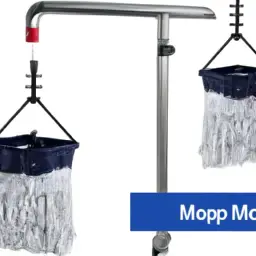
This discussion will focus on different storage options for wet mops, including hanging and standing options.
One of the key benefits of hanging the mop is that it helps to prevent the growth of mold and mildew, which can occur when a mop is stored in a damp environment.
To facilitate wall storage, mop clips or hooks can be used, providing an efficient and space-saving solution.
Different storage options (hanging, standing, etc.)
Different storage options for wet mops include:
- Hanging them on hooks: This is a common method used by many individuals. It allows the mop to dry quickly, prevents germs and bacteria from spreading, maximizes space utilization, and keeps the mop off the floor, reducing the chance of further contamination.
- Standing them upright in a mop bucket: This is another viable option, especially if there is limited wall space available for mounting hooks or holders. However, this method may prolong drying time and result in an unpleasant odor due to moisture accumulation.
- Utilizing wall-mounted holders: Wall-mounted holders provide a convenient way to store wet mops while saving floor space. However, they may not be suitable for all situations depending on the availability of appropriate wall surfaces.
Ultimately, selecting the most suitable storage option will depend on individual preferences and specific circumstances.
Benefits of hanging the mop to avoid mold and mildew
Hanging the mop after use allows for proper air circulation, reducing the risk of mold and mildew formation. This storage method offers several benefits:
- Increased drying time: Hanging the mop ensures that it is exposed to air from all directions. As a result, moisture evaporates more efficiently, preventing the growth of mold and mildew.
- Prevention of foul odors: By allowing the mop to dry thoroughly, hanging it helps eliminate unpleasant smells caused by bacterial growth in damp conditions.
- Enhanced cleanliness: Properly dried mops are less likely to harbor germs and bacteria. Hanging them up prevents these microorganisms from thriving and spreading onto other surfaces.
Overall, choosing to hang your wet mop after use promotes a hygienic environment by minimizing the chances of mold, mildew, odors, and contamination.
Using mop clips or hooks for wall storage
Hanging a wet mop to dry not only prevents mold and mildew but also helps in maintaining its longevity.
To facilitate effective storage, mop clips or hooks can be utilized.
These wall-mounted fixtures provide a convenient solution for keeping the mop in an organized manner while also ensuring that it dries thoroughly.
By using these clips or hooks, the mop is suspended off the ground, allowing air circulation and preventing any contact with the floor, thus reducing the risk of germ accumulation.
This method of storage not only helps in maintaining cleanliness but also aids in preventing bacterial growth on the mop.
Additionally, having a designated spot for storing mops promotes efficient space utilization and minimizes clutter within cleaning areas.
Overall, utilizing mop clips or hooks for wall storage is an effective way to store wet mops and prevent germs and bacteria from proliferating.
Protect the Mop Head
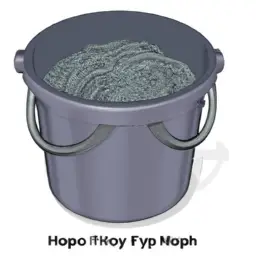
This paragraph discusses the importance of protecting the mop head to prevent dust accumulation.
One effective way to achieve this is by using a mop head cover or a plastic bag.
It is crucial to secure the cover properly to avoid any slipping during storage or transportation.
Covering the mop head to prevent dust accumulation
To prevent dust accumulation, a mop head can be covered when not in use. Covering the mop head serves as a protective measure to maintain its cleanliness and effectiveness.
Dust particles in the environment can settle on the damp surface of the mop head, leading to potential contamination.
By covering it, one can minimize the contact between the mop head and airborne dust particles.
This preventive measure is particularly important in areas where dust levels are high or where sensitive surfaces need to be cleaned regularly.
Additionally, covering the mop head also helps to keep it moist for longer periods, preventing it from drying out quickly.
Overall, using a cover for the mop head ensures that it remains clean and ready for use while reducing the risk of cross-contamination during storage.
Using a mop head cover or a plastic bag
Using a cover or plastic bag for the mop head provides an effective solution to minimize dust accumulation and maintain cleanliness.
Firstly, a mop head cover acts as a barrier, preventing dust particles from settling on the damp surface of the mop head.
This is particularly important when storing the wet mop in areas with high levels of airborne dust or debris.
Additionally, a plastic bag can be used to enclose the entire mop head, providing an extra layer of protection against dust and other contaminants.
Moreover, using a cover or plastic bag also helps prevent germs and bacteria from proliferating on the mop head by creating a sealed environment that inhibits their growth.
Therefore, implementing these measures ensures that the stored wet mop remains hygienic and ready for future use.
- Benefits of using a cover or plastic bag:
- Minimizes exposure to dust particles
- Prevents germs and bacteria growth
Securing the cover properly to avoid slipping
Properly securing the cover is essential for ensuring that it remains in place and does not slip during storage or transportation.
This step is crucial to prevent any leaks, as well as to maintain the effectiveness of the cover in protecting the wet mop from germs and bacteria.
One effective way to secure the cover is by using Velcro straps or adjustable clips.
These fasteners provide a tight grip on the mop head, preventing any movement or slipping.
Another option is to tie a knot around the handle of the mop, securing the cover tightly in place.
Additionally, it is important to ensure that the cover fits properly over the mop head, avoiding any loose ends that could cause slipping.
By following these steps, one can effectively secure the cover and maintain proper hygiene while storing a wet mop.
| Method | Advantages | Disadvantages |
|---|---|---|
| Velcro straps/adjustable clips | Provides a tight grip on mop head | May not be compatible with all covers |
| Tying a knot around handle | Secures cover tightly in place | Requires extra effort to tie and untie |
Label and Rotate Mops (if applicable)

In commercial settings where multiple mops are used, it is important to label each mop for identification purposes. This allows for easy tracking and ensures that each mop is used in rotation to guarantee even usage across all mops.
By implementing a rotation system, the wear and tear on individual mops can be evenly distributed, prolonging their lifespan and maintaining consistent cleaning performance throughout the facility.
For commercial settings with multiple mops
For commercial settings with multiple mops, an effective method of storage that prevents germs and bacteria is essential. To achieve this, it is recommended to assign a specific area or cabinet for each mop.
This helps to avoid cross-contamination between different mops used in various areas of the facility. Additionally, labeling each mop with its designated area or purpose can further enhance organization and prevent mix-ups.
To store wet mops properly, it is crucial to allow them to dry completely before storage. Hanging the mops upside down on hooks or racks can facilitate proper drying and prevent the growth of mold and bacteria. It is also advisable to regularly inspect and clean the storage area to eliminate any potential sources of contamination.
By implementing these storage practices in commercial settings with multiple mops, the risk of spreading germs and bacteria can be minimized, ensuring a safe and hygienic environment for employees and customers alike.
Labeling each mop for identification
In commercial settings where multiple mops are used, it becomes crucial to implement an effective identification system.
Labeling each mop provides a practical solution for distinguishing and organizing the cleaning tools. By assigning a unique identifier to every mop, such as a number or color code, confusion and mix-ups can be minimized.
This enables staff members to quickly locate the appropriate mop for their specific task without wasting time searching or using the wrong one.
Moreover, proper identification also aids in monitoring the usage and maintenance of mops, ensuring that they are regularly cleaned, sanitized, and replaced when necessary.
Overall, implementing a labeling system for mops in commercial settings enhances efficiency and hygiene standards while reducing potential cross-contamination risks.
Implementing a rotation system to ensure even usage
Implementing a rotation system helps ensure equitable distribution and usage of mops in commercial settings. This system involves assigning each mop a unique identifier and establishing a schedule for their use. By rotating the mops regularly, the risk of some mops being overused while others are left unused is minimized.
Additionally, this practice promotes hygiene by preventing the accumulation of germs and bacteria on specific mops. When using a rotation system, it is important to keep track of which mop is currently in use and when it was last used. Furthermore, regular inspection and maintenance should be conducted to identify any damaged or worn-out mops that need replacement.
Overall, implementing a rotation system allows for efficient utilization of mops while ensuring cleanliness and reducing the spread of contaminants in commercial environments.
Regular Maintenance

Regular maintenance of mops is crucial in ensuring their effectiveness and longevity. This includes adhering to a schedule for regular cleaning and replacement, as well as inspecting the mop for any signs of wear and tear.
Additionally, there are tips available to extend the lifespan of mops, such as proper storage and handling techniques.
Schedule for regular cleaning and replacement
To ensure proper hygiene and prevent the growth of germs and bacteria, it is essential to establish a consistent schedule for both cleaning and replacing wet mops.
Regular maintenance of wet mops involves not only cleaning them after each use but also implementing a predetermined schedule for deep cleaning and sanitization. This schedule should take into account factors such as the frequency of mop usage, the type of surface being cleaned, and the level of dirt or grime present.
Ideally, wet mops should be thoroughly cleaned after every use by rinsing them with clean water and hanging them in a well-ventilated area to dry completely. Additionally, it is recommended to replace wet mops periodically to maintain their effectiveness and prevent bacterial contamination.
Adhering to a strict schedule ensures that wet mops remain in optimal condition for efficient cleaning while minimizing the risk of germ buildup.
Inspecting the mop for any signs of wear and tear
Inspecting the mop for any signs of wear and tear is necessary to ensure its continued effectiveness in maintaining proper hygiene. Regular inspection allows for the identification of potential issues that could compromise the mop’s ability to clean and prevent the spread of germs and bacteria.
To thoroughly inspect a wet mop, consider the following:
- Check for fraying or loose threads on the mop head.
- Examine the handle for cracks or other signs of damage.
- Assess the overall cleanliness of the mop head, ensuring it is free from debris or residue.
- Look for discoloration or foul odors, which may indicate bacterial growth.
- Inspect any attachments or mechanisms, such as wringers or clips, to ensure they are functioning properly.
By conducting regular inspections and addressing any wear and tear promptly, one can maintain a clean and effective wet mop that contributes to a hygienic environment.
Tips for extending the mop’s lifespan
By implementing proper maintenance techniques, the longevity of the mop can be significantly extended. One important tip for extending the mop’s lifespan is to clean it thoroughly after each use. This involves rinsing off any debris or dirt and allowing it to dry completely before storing it.
Additionally, avoiding excessive force when using the mop can prevent wear and tear on its fibers. It is also recommended to avoid using harsh cleaning agents that could damage the mop’s material.
Regularly inspecting the mop for any signs of wear and tear is crucial in identifying potential issues early on and taking necessary steps to address them. Lastly, storing the mop in a cool, dry place can help prevent mold growth and maintain its quality over time.
By following these tips, one can ensure that their wet mop remains effective and lasts for an extended period of time while also preventing germs and bacteria from accumulating on its surface.
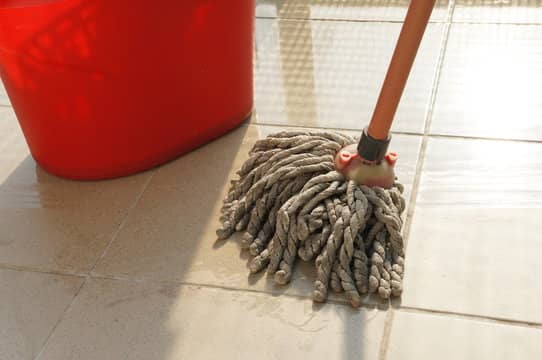
How to Store Wet Mop for a Long Time
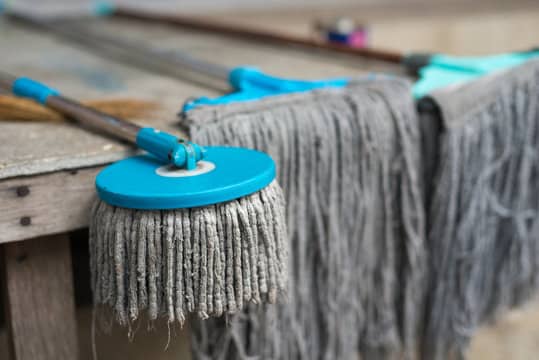
Types of Wet Mops
Mops are used to clean floors and to wipe either wet or liquid substances on the floor.
There are three common types of wet mops depending on the choice of work or desires.
These are Cut end-wet mop heads, Looped end-wet mop heads, and Microfiber wet mop heads.
Cut end wet mop head
Cut-end wet mop heads are the most common type of mops because they are the least expensive and can be easily disposed of.
End wet mops easily absorb liquids (absorbent) but can be used to cover a limited space. They are not durable and cannot be laundered.

Looped wet mop head
Looped wet mop heads are considered the type of wet mops that have a moderate price and are durable.
This quality of looped wet mops makes them more accepted by users than cut-end wet mops heads.
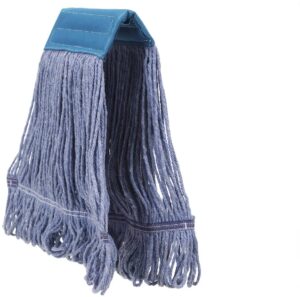
Looped wet mops easily prevent the unraveling of thread across the mopped surfaces.
They are washed by machine apart from other products such as cotton and poly cotton looped wet mops types.
Microfiber wet mop head
Microfiber wet mop head is the best type of wet mop.
They are made from polyester and polyamide for easy collection of specks of dirt until they are washed.
They can be used multiple times without degrading. They are hypoallergenic to users.
Microfiber wet mops usually absorb liquid up to seven times its normal weight.
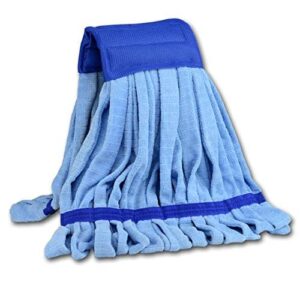
Microfiber wet mops are lightweight and are not designed to handle heavy cleaning work.
There are various wet mop accessories to ensure proper organization, cleaning, and convenience for the safety of the users.
Wet mop accessories are mop buckets, wet floor signals, mops, broom racks, and mop handles.
Colored coded wet mops heads have some cleaning advantages due to their excellent ability to prevent contamination of other surfaces by gems and bacteria.
Bear in mind that, the process of storing dry mops is different.
15 Tips to take Care and Storage of Dirty wet mops
Mops are effective tools for cleaning the surface (floors) with a clothed mouth attached to a wooden or steel long handle.
Wet mop heads are exposed to germs and bacteria if not properly washed and maintained before and after use.
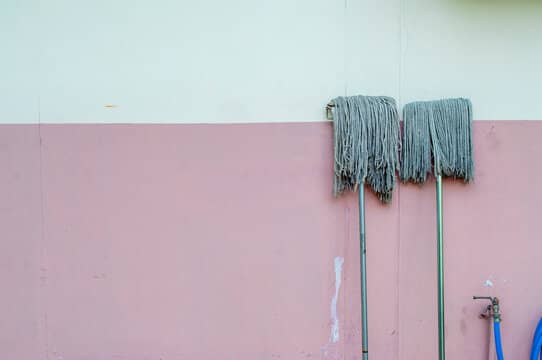
Thus, there is a need for proper cleaning, maintenance, and storage of wet mops.
Wet dirty mops are mops that are used as well as mops that are not yet washed after use.
#1
A dirty wet mop must be properly cleaned, maintained, and stored before, during, and after use to avoid gems and to prolong its durability.
#2
Before use, properly clean the head of the mop in warm water, to ensure any leftover chemicals are rinsed out.
This cleaning before use is done to avoid and reduce the risk of contamination of chemicals carried from previously mopped surfaces which can be of great hazard to the new environment or the users.
#3
Avoid twisting of mops head when dipped in the mop wringer to prevent landboarding of waters
#4
Always strive to take good care of the Mops after each use.
After use, the wet mops head should be washed with soap and rinsed in clean water.
With this, the Mop will be devoid of germs and all forms of dirt.
#5
After mopping, spend some time soaking the dirty wet mop head in warm water for some minutes before proper cleansing and rinsing of the mop.
Also, this is done to prevent the dirty mop head from being contaminated with chemicals.
#6
Never leave a dirty mop head in water over a long period or overnight. If you do this, then you are simply turning your Mop into a breeding place for germs.
The Mop when left inside water for a long time can breed bacteria, mold, or mildew. It can also weaken the strength of the mop fibers.
#7
After proper washing and cleaning, drying processes, store the wet mop by hanging it with its head up to prevent the mop head from forming mold.
#8
Never use bleaching agents when using or washing microfiber wet mop. The use of bleach can quickly damage the fibers.
To this effect, disinfectants are hereby recommended for washing microfiber wet mops and other types of wet mop heads.
You can try to soften the mop head from time to time to avoid these.
#9
Washed wet mops can be placed outside the doors to get them dried in the sun.
#10
Avoid storing wet mops heads in a closed space such as cupboards, sacks, or even in a small room.
Wet mops should be left stored in a well-spacious and ventilated environment.
#11
Avoid keeping wet mops head inside the mop buckets or storing them against the floor.
#12
Proper washing of wet mops helps to prolong their lives. Don’t rush! Spend ample time scrubbing the mop.
#13
When washing through the use of a laundry machine, it is advisable to remove the dirty wet mop head to ensure proper washing, and cleaning and to prevent the mop handle from being destroyed.
Procedure for Proper Mopping
- Proper arrangement of intended mopping areas.
- Sweep the Intend mopping area lightly before mopping.
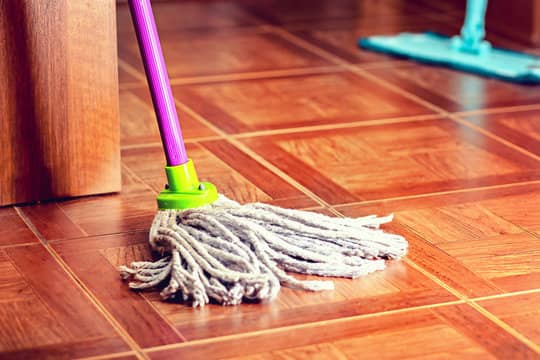
- Open the windows or doors to allow natural air circulation in the mopped areas or air conditioning as the case may be.
- Always place caution signals around when mopping to avoid accidents
- Avoid wet mopping. Mop in a way to ensure that the area mopped will get dried easily
- Mop any area in the ‘figure 8’ pattern to ensure proper cleaning of the area mopped
- After mopping, remove all caution signals and arrange the mopped areas
- Use the appropriate type of wet mop head for a designated area.
Frequently Asked Questions
How often should I clean and rinse the mop?
The frequency of cleaning and rinsing the mop depends on factors such as usage, type of flooring, and level of dirtiness. However, it is generally recommended to clean and rinse the mop after each use to prevent the growth of germs and bacteria.
What type of disinfectant should I use to disinfect the mop?
To disinfect a mop, it is recommended to use a disinfectant solution that contains at least 70% alcohol or a bleach solution with a concentration of 1:10. This helps kill germs and bacteria effectively while preventing their growth on the mop surface.
How can I prevent gems and bacteria from growing on the mop?
Preventing the growth of germs and bacteria on mops is crucial for maintaining hygiene. Employing proper storage techniques such as drying the mop thoroughly, using disinfectants, and storing it in a clean and well-ventilated area can effectively inhibit microbial proliferation.
Can I store the mop in a closet or does it need a specific storage area?
The mop can be stored in a closet as long as it is allowed to dry completely before being stored. It is important to ensure that the storage area is clean and free from moisture to prevent the growth of germs and bacteria.
How frequently should I replace the mop head?
The frequency of replacing a mop head depends on its material and usage. On average, a cotton mop head should be replaced every 3-6 months, whereas a microfiber mop head can last up to 1 year or more.
Final Words
Wet mops are effective tools in ensuring a clean and dirt-free area.
The need to know the procedure to mop, the types of wet mops available, and proper cleaning, maintenance, and storage of wet mops is paramount.
The ways dirty mop needs to be cleaned before and after use are carefully explained with the right procedure to store in a place devoid of germs and bacteria of any kind through the use of wet mops.
Hence, it is hereby concluded that dirty wet mops are not to be kept in a dirty state. Always strive to keep wet mops clean at all times.




